Want to know the best methods to reduce arsenic in drinking water at home?
In this guide, we’ve discussed which 10 methods are best for arsenic removal. We’ve also highlighted the methods that aren’t effective, so you know to avoid them, and listed some important considerations to make when choosing a treatment method to tackle arsenic contamination.
📌 Key Takeaways:
- The best ways to reduce arsenic in drinking water are:
- Reverse osmosis
- Ultrafiltration
- Nanofiltration
- Iron oxide adsorption
- Distillation
- Activated alumina
- Ion exchange
- Oxidation/filtration
- Coagulation/filtration
- Unique filtration methods
Table of Contents
- 💡 What is Arsenic?
- 🩺 Health Risks Associated With Arsenic in Drinking Water
- 🤔 How Does Arsenic Get Into Water?
- 📉 What’s the Legal Limit for Arsenic in Drinking Water?
- 🧪 How to Test for Arsenic in Private Well Water
- ✅ How to Remove Arsenic from Water
- 🚫 What CAN’T Remove Arsenic From Water?
- 📊 What Factors Should you Consider when Choosing Between Arsenic Removal Methods?
- ❔ FAQs
💡 What is Arsenic?
Arsenic is an element that occurs naturally in the earth’s crust.
Natural processes in the earth, such as the weathering of rocks and minerals, as well as human activities like mining, can cause arsenic to accumulate in water, soil, and air.
We can’t control how much arsenic is in our environment, and in some parts of the country, it’s present at higher concentrations than in others.
Arsenic 3 vs. Arsenic 5
Arsenic is present in two different valence number ratings: arsenic III and V.
Arsenic 3, otherwise known as arsenite, is less toxic than arsenic 5, known as arsenate.
While both arsenate and arsenite are harmful to health, arsenite is particularly dangerous – and typically, it’s also more difficult to remove from water.
Arsenate is easier to eliminate from water because it oxidizes in the presence of free chlorine or a similar oxidant.
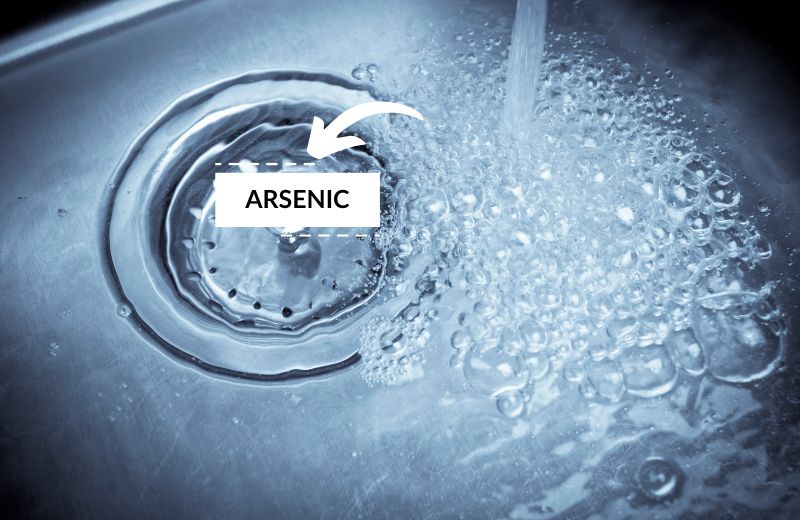
🩺 Health Risks Associated With Arsenic in Drinking Water
There are several health concerns relating to long-term exposure to arsenic in drinking water.
According to the WHO, some of the health issues associated with arsenic exposure in water include:
- Bladder, lung, and kidney cancer, and skin lesions
- Cardiovascular disease and diabetes
- Numbness in hands and feet; paralysis in hands and feet and other parts of the body
- Cognitive development effects in infants and children who are exposed to arsenic in the womb
- Increased risk of death amongst young adults
Aside from the possible effects of long-term exposure, you may also experience some health effects from short-term exposure to arsenic at dangerously high levels, including:
- Nausea & Vomiting
- Diarrhea
- Stomach pain
🤔 How Does Arsenic Get Into Water?
There are several different ways that this metal can enter into private well water.
The most common source of dissolved arsenic in groundwater is rainwater or snow seeping through the earth’s rock and soil where arsenic is naturally present.
Arsenic may also contaminate drinking water through agricultural and industrial pollution.
📉 What’s the Legal Limit for Arsenic in Drinking Water?
The U.S. Environmental Protection Agency (EPA) has established an MCL for arsenic in drinking water based on research into its possible health effects. The standard for arsenic is 10 PPB, or parts per billion, or micrograms per liter.
Private wells are exempt from these EPA standards because it’s the owner’s sole responsibility to make sure their drinking water arsenic levels are lower than 10 PPB.

🧪 How to Test for Arsenic in Private Well Water
Because arsenic has no color, taste, or odor, the only way to detect its presence is to get your water tested.
You should check your water for arsenic every three years. It’s best to use a private laboratory or public health service for testing.
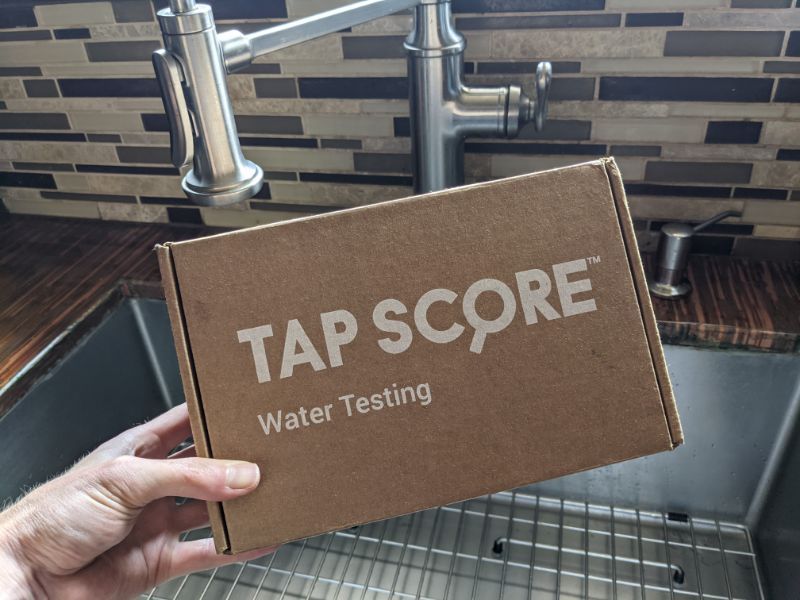
An alternative to laboratory testing is to purchase your own at-home water testing kit. This will help you determine whether or not arsenic is present, but won’t give you an accurate reading of quantity.
If your water contains arsenic, read the below section to find out how to remove this contaminant at home.
✅ How to Remove Arsenic from Water
Some of the best arsenic water treatment systems for drinking water include:
Reverse Osmosis
Reverse osmosis is incredibly effective at removing arsenic from water, and hundreds of other organic and inorganic materials.
This type of treatment system consists of several filters and a reverse osmosis membrane. It’s typically installed as a point-of-use system (either under your kitchen sink or on a countertop), although there are some whole-house treatment systems available.
The best reverse osmosis systems remove up to 99% of arsenic from your water. The RO membrane makes reverse osmosis one of the best at-home water treatment systems for all-round contaminant removal: it rejects impurities of all sizes, from sediment to metals and tiny bacteria.
Point-of-use RO systems have several filters and an RO membrane that require frequent replacements to maintain their high performance.
Ultrafiltration
Ultrafiltration is a similar process to reverse osmosis, and is almost equally matched when it comes to arsenic removal.
An ultrafiltration water treatment system is usually installed underneath a kitchen sink. UF systems also use membrane separation to reduce a whole host of dissolved solids. However, the effectiveness of these systems in reducing arsenic depends on their exact pore size.
If you’re looking at ultrafiltration to reduce arsenic levels in your water, make sure to choose a system that has third-party testing or official certifications to support the manufacturer’s performance claims.
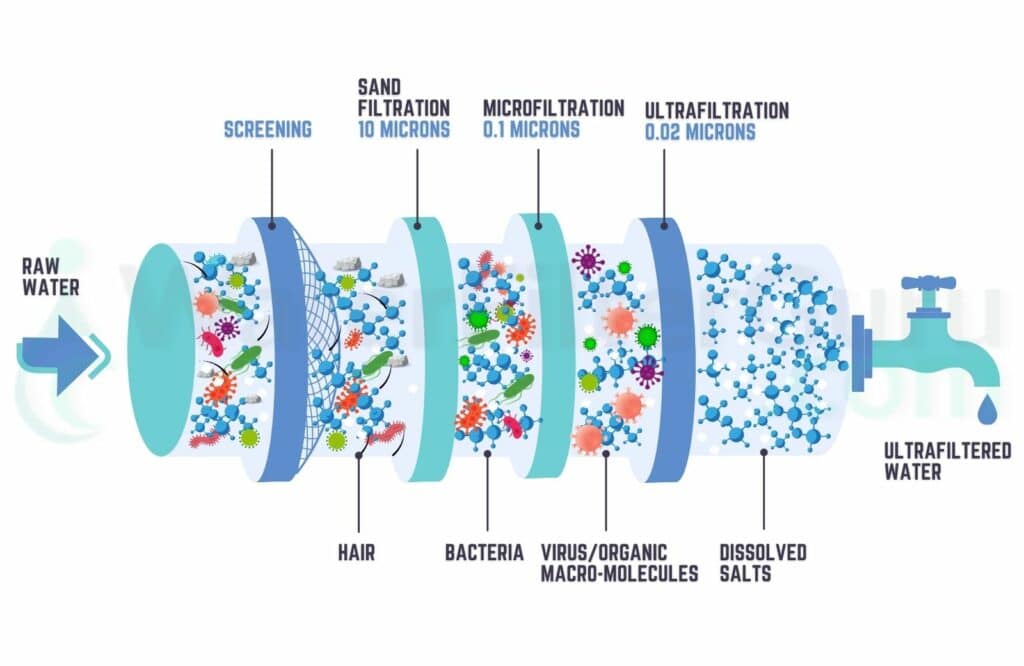
Nanofiltration
Nanofiltration media (the kind often found in straw filters and other emergency/portable water filters) is another capable method of reducing arsenic levels due to its tiny pore size.
Again, the potential for nanofiltration to reduce arsenic depends on the structure and quality of the filter media. We read some reports saying that nanofilters could only reduce arsenic by around 50%, while others said that nanofiltration was highly effective and could essentially eliminate arsenic concentrations in water.
We also advise checking the manufacturer’s test results if you’re looking for a system that uses nanofiltration for arsenic removal.
Iron Oxide Adsorption
Iron oxide adsorption removes arsenic from drinking water with granular ion oxide media (usually in pellet form). Contaminated water flows over the media, which is typically loaded into a filter tank or housing.
Both types of arsenic can be effectively removed by ion oxide adsorption, as well as other contaminants, like chromium, mercury, and lead.
There are several advantages of iron oxide media, including its affordability and longevity. With that said, it does need to be backwashed regularly to remove the accumulated contaminants.
Distillation
Distillers are a countertop water treatment solution that reduce up to 99.99% of all water impurities, including arsenic.
To use a water distiller, add water to the boiling chamber, and switch the machine on. The water will evaporate, before passing through a corridor and condensing into a clean carafe.
Most contaminants, including arsenic, can’t evaporate, which means they’re left behind in the boiling chamber.
The water quality of the evaporated and condensed water is very high, with virtually no impurities remaining. Plus, because distillers require virtually no maintenance, they’re cheap to maintain.
The only setback of distillation is it takes a long time – usually several hours – to distill a batch of water, so it’s not as immediate as some options.
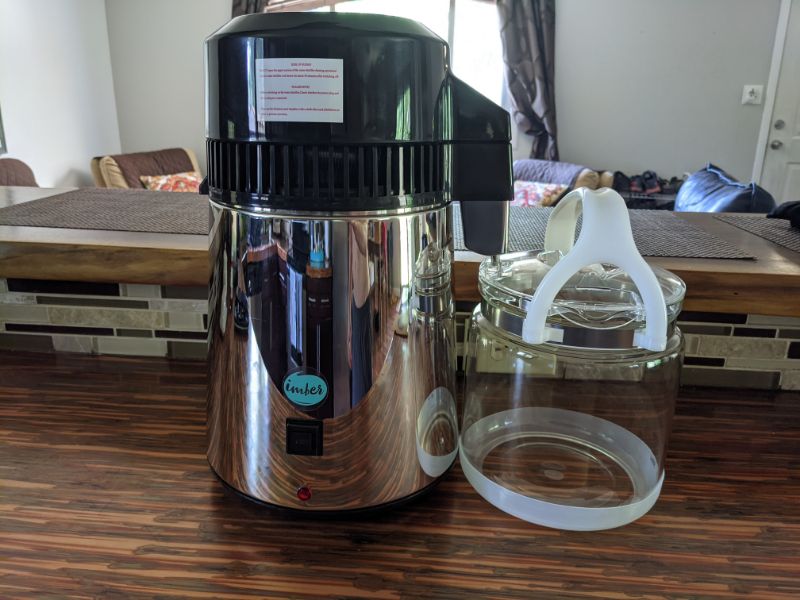
Activated Alumina
An activated alumina system uses an alumina media that adsorbs contaminants including both types of arsenic, as well as fluoride and some lead.
Most activated alumina systems can also filter out iron. You can find activated alumina filters in countertop filtration systems, as well as whole-house and under-sink treatment systems.
Activated alumina is effective in reducing at least 85% of arsenic from water, but it has its setbacks – this media may introduce aluminum into your water supply.
Ion Exchange
Ion exchange resin can be used to treat water containing arsenic. An anion resin traps arsenic particles and prevents them from passing into your home. In this type of water treatment, the arsenic will be replaced with a non-toxic cation – usually sodium.
Once the resin bed has reached capacity, an ion exchange system will flush the bed and remove the arsenic particles in a process called regeneration.
Ion exchange systems use a popular whole house treatment method, but they have their drawbacks. For one, these systems only reduce arsenic 3, and aren’t capable of reducing arsenic 5. Plus, they require maintenance in the form of salt top-ups, and the ion exchange resin will need replenishing after roughly 6 to 8 years.
Oxidation and Filtration
Oxidation and filtration uses a chemical like chlorine or potassium permanganate to oxidize various contaminants from water, before capturing them in a filtation media.
This method of arsenic treatment is actually predominantly used to remove iron, manganese, and hydrogen sulfide, but it’s also highly effective at removing arsenic from water.
Oxidation/filtration systems are typically point-of-use (POU) units, offering the benefit of arsenic-free water throughout your home.
Coagulation and Filtration
A coagulation/filtration system is another method of arsenic treatment that uses a coagulant like iron oxide to cause contaminants to clump together, making them easy to remove with filtration.
Coagulation water treatment technology can also reduce both types of arsenic. However, it’s rare for coagulation to be used at home – it’s typically used in much larger-scale applications at public water treatment plants.
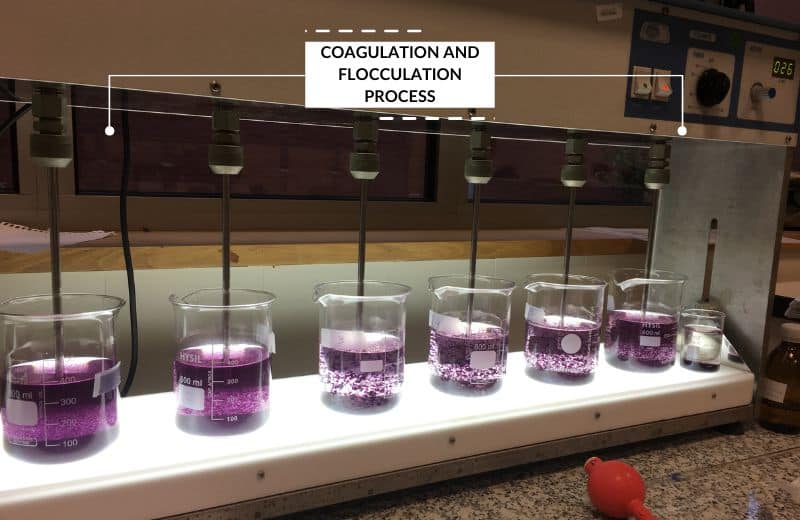
Unique Filtration Methods
You’ll notice that certain countertop filters and water filter pitchers can remove arsenic despite not using any of the processes mentioned above. This is likely because the manufacturer has designed their own patented filtration process that allows for arsenic removal.
A good example of this is the Clearly Filtered Water Filter Pitcher, which uses Affinity Filtration – a process that draws hundreds of dangerous contaminants out of water with a series of tiny powerful magnets – to remove arsenic.
We wanted to make you aware of these exceptions because it’s easy to assume that an entire group of filters (such as water pitcher filters) can’t remove arsenic, but there are some exceptions to this generalization.
🚫 What CAN’T Remove Arsenic From Water?
Now we know which methods can reduce arsenic, what are some of the methods that aren’t effective in removing arsenic from drinking water?
Activated Carbon Filters
Basic activated carbon filtration isn’t usually effective in removing arsenic.
Activated carbon filters can reduce chlorine, poor tastes and odors, and some pesticides and VOCs. This method of filtration isn’t comprehensive enough to target contaminants with a low affinity for the carbon pores, like arsenic, in drinking water.
Water Softeners
Water softeners can reduce a few select metals as well as softening water, but they can’t be used to reduce arsenic.
The main impurities that are targeted by a water softener’s ion exchange process are calcium and magnesium hardness minerals. So, you can use a water softener alongside an arsenic removal system to target a different water quality issue, but the two can’t be used interchangeably.
Ceramic Filters
Ceramic filters are mildly effective at removing arsenic from drinking water – most can reduce arsenic by around 30-50%.
Some ceramic filters may be combined with additional filtration media that makes them more capable of reducing arsenic, so don’t rule them out entirely. However, a ceramic filter alone isn’t effective enough to be used exclusively for arsenic removal.
📊 What Factors Should you Consider when Choosing Between Arsenic Removal Methods?
When you’re deciding on a method to treat your arsenic-contaminated water, be sure to consider the following factors:
- Your budget – Arsenic water treatment systems cost $50-$1,650 on average. A whole house treatment system is costlier than a point-of-use system.
- Your water quality – Consider how much arsenic your water contains, as well as other contaminants you want to remove from your drinking water. This may affect your choice of treatment system.
- Drinking water vs. whole home treatment – If you just want to remove arsenic from your drinking water, go for a point-of-use system. If you want to remove arsenic from your entire home’s water supply, go for a point-of-entry system.
- Installation/maintenance requirements – Systems that are hooked up to your water line are more difficult to install than standalone units. Also consider maintenance, like filter/media changes, or backwashing, and how much this will cost per year.
- Flow rate – Make sure your chosen system has a fast flow rate, especially if you’re installing a point-of-entry system.
Related readings:
❔ FAQs
Does boiling water remove arsenic?
No, boiling water won’t reduce its arsenic concentration. This will only cause some of the water to evaporate, increasing the arsenic concentration per liter of water.
Does a Brita filter remove arsenic?
No, a Brita filter can’t reduce arsenic. Brita filters are basic carbon-based filters that can only reduce a handful of chemicals, tastes, and metals – not arsenic.
What chemicals remove arsenic from water?
Chemicals like chlorine and potassium permanganate can be used to reduce arsenic in water in an oxidation/filtration system. The chemicals must be combined with filtration to remove the oxidized arsenic.
Does shocking a well remove arsenic?
No, shocking a well doesn’t remove arsenic. The purpose of shocking a well is to disinfect the water – chlorine can’t remove contaminants like arsenic.
Is it expensive to remove arsenic from water?
Removing or reducing arsenic in water can be expensive, but there are affordable methods of arsenic removal, too. Some of the best water pitchers can reduce arsenic and cost less than $100 upfront.
